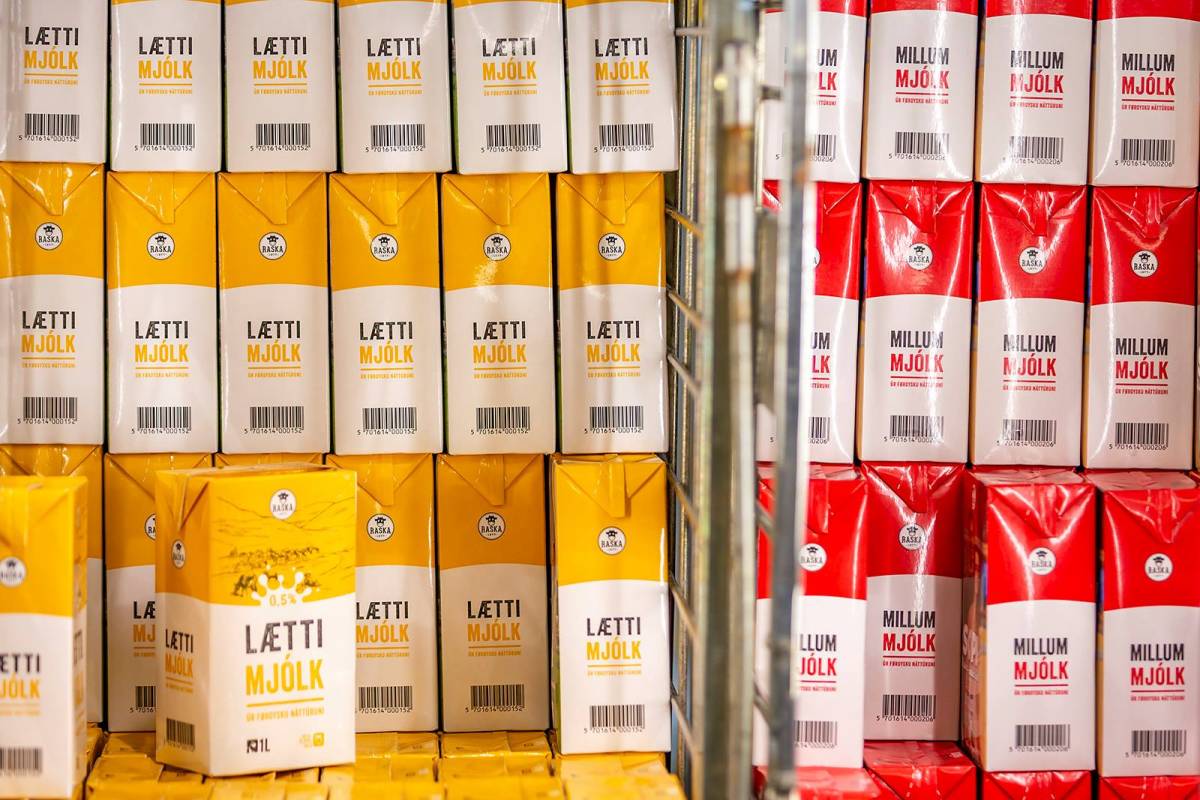Retail trade index
03. Jan 2024
New format for retail figures

Faroese retail sales figures (listed here in nominal values converted to real values) are now comparable with international data. Read more about the new standardised format at the bottom of this article.
In nominal prices, grocery stores (referred to in the statbank as ‘Retail sale in non-specialised stores’) saw a 5% year-on-year sales increase in Q3 2023. By subtracting the inflation rate, we get the actual volume of sold goods (real sales). Real sales for grocery stores dropped by 2% year-on-year. In other words, despite a slight increase in sales value, the sales volume decreased by 2%.
[px-graph-1]
Household equipment stores
Better results were reported in ‘Retail sale of hardware, paints and glass in specialised stores’, a subcategory of ‘Retail sale of other household equipment in specialised stores’. Sales in this subcategory increased by just over 8% year-on-year in nominal terms, and the volume of sold goods increased by almost 6%.
[px-graph-2]
‘Retail sale of electrical household appliances in specialised stores’ is another subcategory of ‘Retail sale of other household equipment in specialised stores’. Sales in nominal terms in this subcategory dropped by 2% year-on-year, while the volume of sold goods dropped by 4%.
[px-graph-3]
Clothing sales down in volume and value
‘Retail sale of clothing in specialised stores’ dropped by 8% in nominal terms over this period, while the volume of sold goods decreased by 9%.
[px-graph-4]
Lower sales volume of cosmetics
Nominal sales of ‘Retail sale of cosmetic and toilet articles in specialised stores’ increased by just over 2% year-on-year. However, adjusting for inflation, we see a 6% decrease in the volume of sold goods.
[px-graph-5]
New measures for the retail trade index
Faroese retail sales figures will now be reported in a different format. Retail sales will continue to be listed in nominal values converted to volume of sold goods. In the old format, figures were divided into the following three main commodity groups: ‘groceries and non-alcoholic drinks’, ‘clothing and footwear’ and ‘furnishings and household equipment’, and the retailers were classified in accordance with the statistical classification of economic activities in the European Community (NACE) Rev 1.
The new and revised retail trade index follows the wholesale and retail sale format used by Eurostat. The retail trade index covers companies in the NACE Rev. 2 ‘G47 Retail trade, except of motor vehicles and motorcycles’, updated from 2001 onwards.
The old format included 3 commodity groups. The new format contains 9 industry branches, 4 groups along with the G47 division. NACE codes are based on four levels.
Example:
NACE level 1: G Wholesale and retail trade; repair of motor vehicles and motorcycles. Sections.
NACE level 2: G47 Retail trade, except of motor vehicles and motorcycles. Divisions.
NACE level 3: G.47.1 Retail sale in non-specialised stores. Groups.
NACE level 4: G.47.11 Retail sale in non-specialised stores with food, beverages or tobacco predominating. Classes.
The old commodity groups ‘groceries and non-alcoholic drinks’, ‘clothing and footwear’ and ‘furnishings and household equipment’ generally represent the same types of companies listed in ‘G.47.11 Retail sale in non-specialised stores with food, beverages or tobacco predominating’, ‘G.47.7.1 Retail sale of clothing in specialised stores’, ‘G.47.7.2 Retail sale of footwear and leather goods in specialised stores’ and ‘G47.5 Retail sale of other household equipment in specialised stores’.
Definitions:
- Nominal prices: the price paid for a product or service at the time of the transaction. Nominal prices reflect the buying power in the year in which the transaction occurred.
- Seasonally adjusted figures are modified to eliminate the effect of seasonal influences. Some months have high levels of seasonal fluctuations, making it difficult to adjust for seasonal influences.
- Real prices are adjusted for inflation, giving an indication of sales volume.
- The trend describes the measured figures, adjusted for seasonal changes and other random factors.
- Indices show the percentage changes from one year to another with a base year set at 100. The difference between two years and comparisons with the base year are measured in percentages.
- Sales figures reveal the turnover of companies offering goods and services in the various commodity groups.